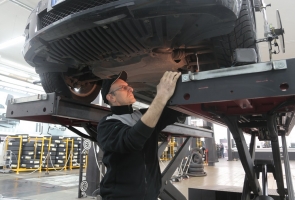One of the most effective marketing tools in any business’s box is its blog, and this is no less true for auto repair businesses. If your shop isn’t already blogging, it’s time to start. I’m guessing that you stumbled on this article because you’re either thinking about starting one or you have one that isn’t doing all that well.
The good news is that you aren’t alone if your blog is underperforming. This is a widespread problem in your industry. Why is that good news? Simple: You’re reading this post, and your competitors aren’t. You’re about to get some advice on how to get your blog noticed and manage it so that it reaches and engages as many people as possible.
2 Kinds of Auto Repair Blogs
Auto repair blogs come in two flavors: those written to consumers and those written for other industry pros. Both are viable options for content marketing. Whether your goal is to book more new business from the public or to educate other mechanics about specific methods and procedures, your messaging must be delivered from a specific angle. Let’s look a little more closely at each.
Consumer Blogs
Since we are talking about blogs geared specifically toward repair, it is first necessary to decide what it is we want the blog to accomplish. Is the goal to drum up new business for a garage? Is it to sell auto parts through an e-comm?
If the goal is to motivate people to come to your shop for repairs, the emphasis of your blog should be demonstrating the intricacies of common repairs. What this accomplishes is twofold. First, it communicates to the consumer the need for a professional mechanic. It also presents the opportunity to show the level of expertise you and your mechanics possess about the repair.
How to Write ‘How to’ Posts
“How to” posts that walk the reader through the steps of a repair are among the most effective styles for accomplishing the above objectives. The danger in them is that the information can be very dry and static. What can a good blogger do to make this kind of information more engaging?
I suggest taking a more narrative than technical approach with these kinds of posts. Explain the process from the perspective of the mechanic, but do it in story form. Frame the narrative in a problem/solution kind of way:
1. Lead with a description of the problem that mirrors how a customer walking in off the street would describe it. This tells the reader that you understand how your customers communicate.
2. Follow up with an explanation of the problem. This shows that you understand the details well enough to diagnose and fix it.
3. From there, go into your step-by-step description of the repair.
4. Once that’s been done, give the story a happy ending. How did the customer feel once the car was repaired? Emotion is a highly effective vehicle for increasing and maintaining engagement. When you write your posts this way, it lends an emotional dimension to a decidedly unemotional subject.
Industry Blogs
Industry blogs are more fact-based. They rely on the more technical details to be the parts that engage the audience. This kind of approach works much better in B2B marketing and e-commerce blogs since the goal is more likely to sell products than services. In this instance, your goal is to inform more than to entertain, but striking a fine balance between the two is also a good idea.
Try not to use too much emotional language. Think in terms of a technical manual, not a story in this instance. This is the opposite advice that I normally give about blogging. In most instances, a “features and benefits” approach will lose a vast majority of readers. When writing B2B, however, many readers appreciate you just getting to the point; they already know you’re trying to sell them something, so don’t beat around the bush.
In posts like this, you need to do several things:
• Describe a specific malfunction (the problem).
• Introduce the product (the solution).
• Describe how the product works.
• List all probable applications.
• Cite the reason(s) they should buy.
• Ask for the sale.
This is a standard marketing strategy: You start by spotlighting a specific paint point, follow up with a viable solution, then expand on your messaging from there. The last three parts move the reader along in the buyer’s journey. Presenting the problem raises awareness, describing the product or products that solve the problem makes them consider buying them, and showing the scope of the product’s usefulness helps the reader decide to buy.
Most of your efforts should be focused on the consideration stage. Chances are the reader can find the parts anywhere. Your job is to convince the reader to not just buy but buy from you. The better you get at the above formula, the easier that task becomes.
Once you present a compelling argument for why to buy from you, the last part is obvious: Ask the reader to buy. You do this in the form of a specific, pointed call to action. Tell the reader specifically what they need to do with the information presented. Should they fill out a form, add an item to their cart on your site, or call you to arrange pickup? These are all common and viable CTAs that direct the reader in how to complete their buyer’s journey.
Getting Help with Your Blog
If all of this sounds great but you’re having trouble figuring out how to make it happen, you might want to consider working with a professional automotive content marketing agency, like Beez. We have a solid team of both staff and freelance writers who know automotive repair blogging and can help make your blog a success. Feel free to contact us for more information or to talk with us about your next blog project.




